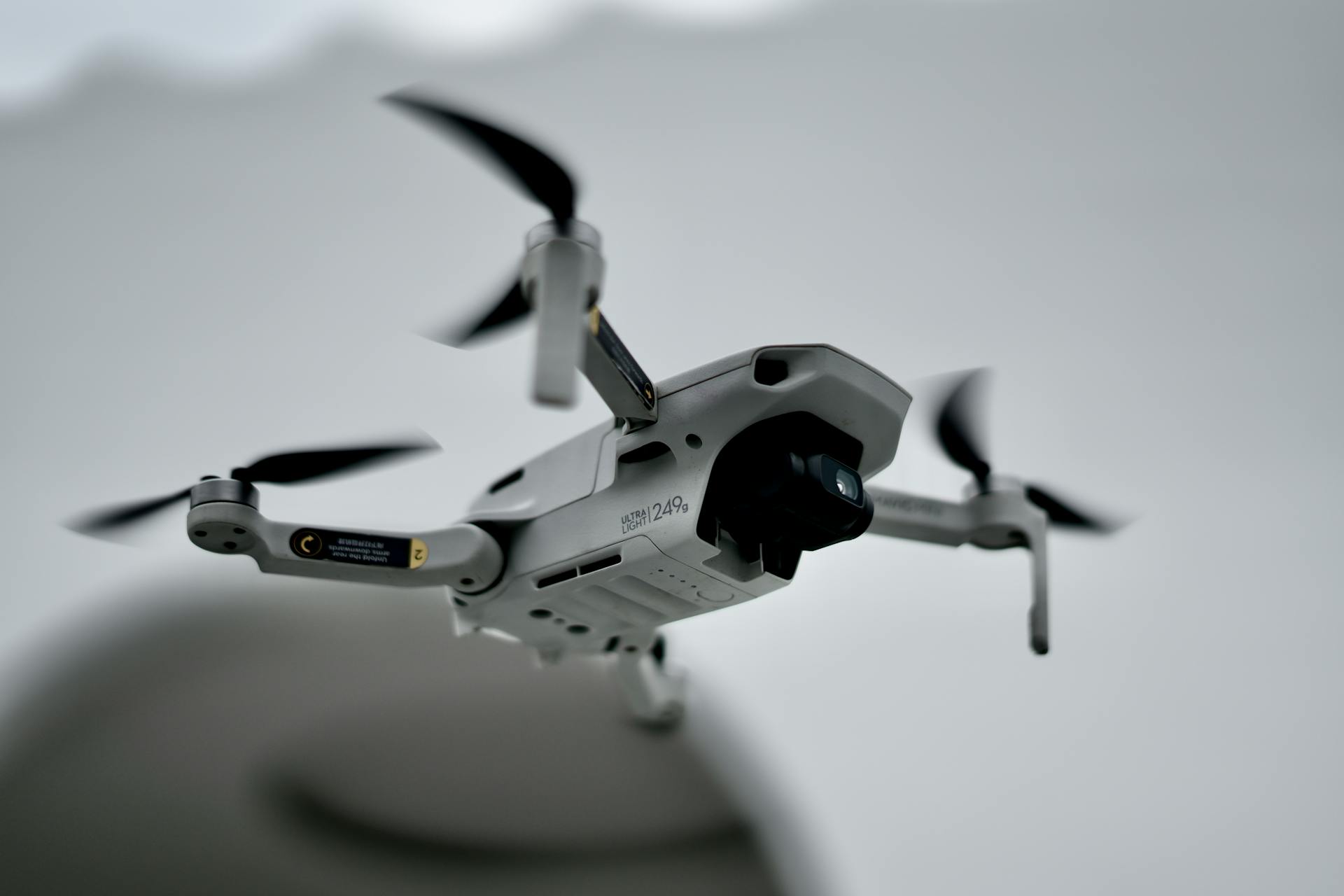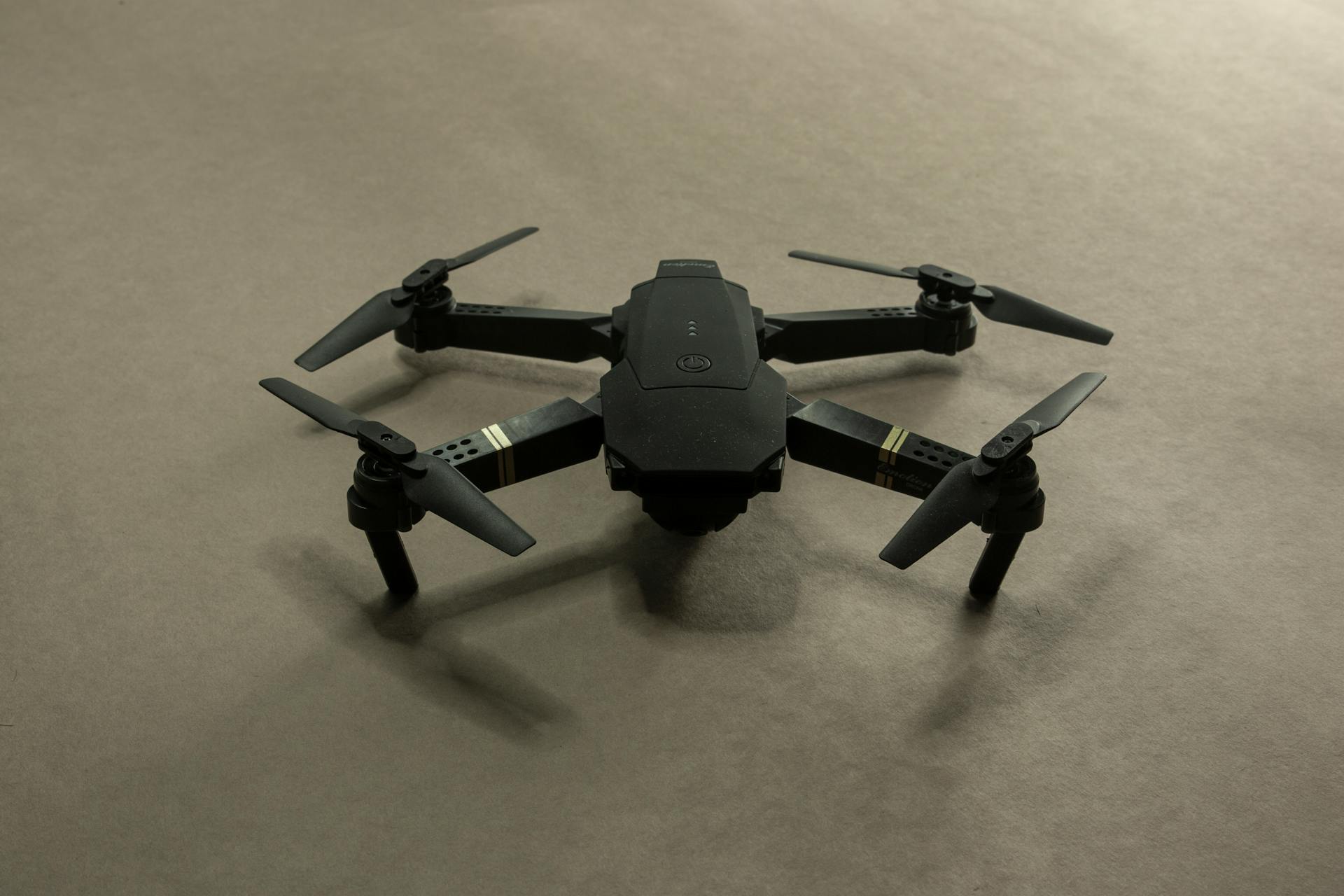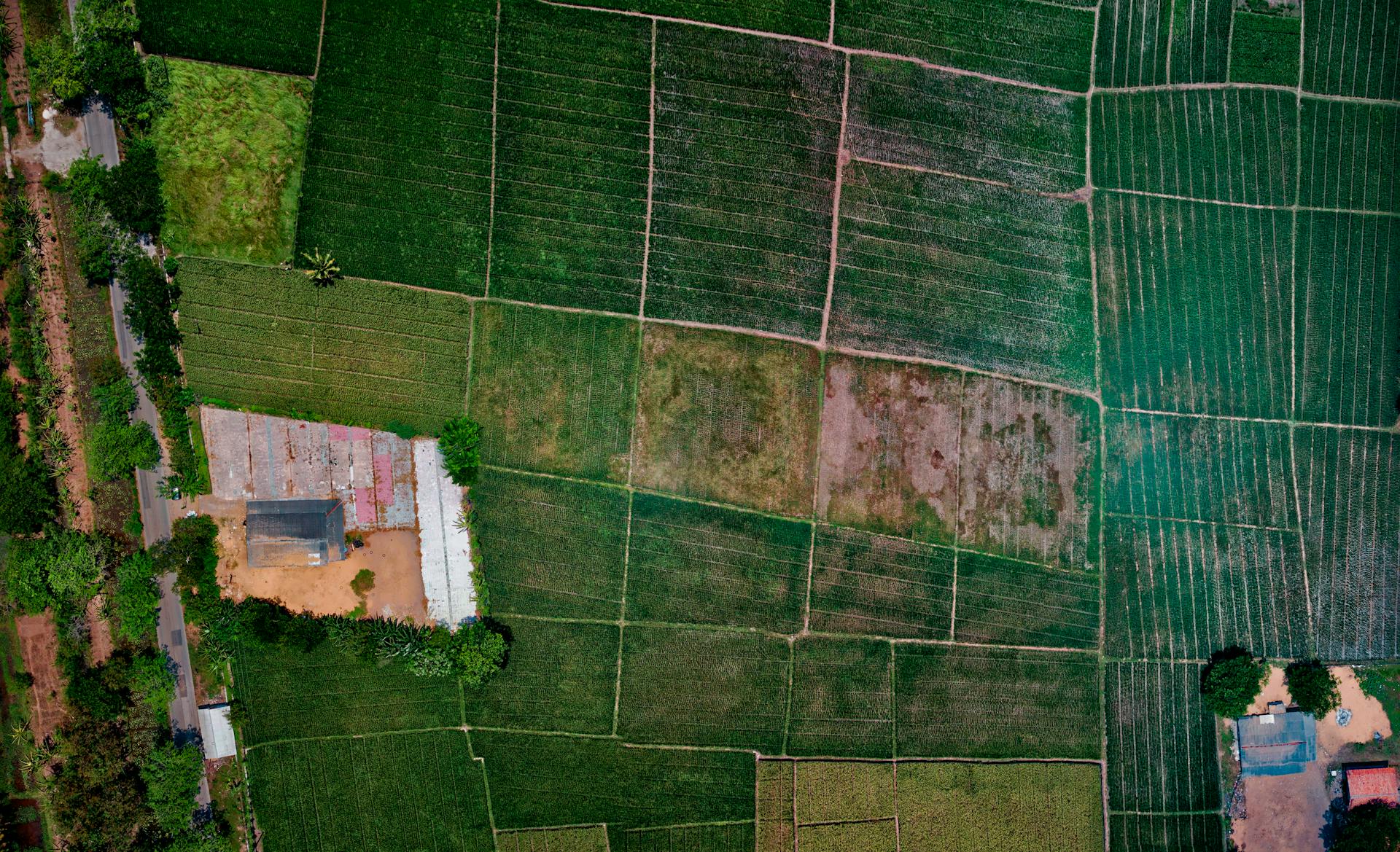
The Drone Tag Mini is a small, lightweight device that provides compliance with the FAA's Remote ID requirement for drones.
It's designed to be easy to use, with a simple setup process that can be completed in just a few minutes.
The device connects to your drone via Wi-Fi and sends its location and identification information to the FAA's Remote ID system.
This information is then shared with the public, allowing authorities to track and identify drones in the air.
The Drone Tag Mini is a cost-effective solution for drone operators, with a price point of just $49.99.
It's a more affordable option compared to other Remote ID solutions on the market.
Worth a look: Faa Drone Remote Id Module
What Is Drone Tag Mini Remote ID
The Drone Tag Mini Remote ID is a small device that can be added to your drone to enable it to broadcast identification and location information while in flight. This is especially useful for non-Standard Remote ID drones that need to comply with Remote ID rules.
You can register your drone once and apply the registration number to all devices listed within your inventory, including the Drone Tag Mini Remote ID. Just list the serial number of the device during registration.
The Drone Tag Mini Remote ID works by transmitting the necessary data while flying, allowing authorities to track and identify your drone. This is similar to how a digital license plate for drones, known as Remote ID, helps identify and track drones in the sky.
Remote ID is required for drones that are registered or required to be registered, including those flown for recreation, business, or public safety. This includes drones that are part of your inventory, even if they're not all in use at the same time.
Here are the two ways drone pilots can meet the Remote ID rules:
- Standard Remote ID Drone: Broadcasting Drone’s ID
- Non-Standard Remote ID Drone with Remote ID Broadcast Module
Compliance and Registration
To be compliant with Remote ID rules, you need to either operate a Standard Remote ID drone, which broadcasts identification and location information, or fly within a FAA-Recognized Identification Area (FRIA).
If you're a recreational drone pilot, you can register once and apply your registration number to all the devices listed within your inventory. You'll need to list the serial number(s) of each Standard Remote ID drone and/or the Remote ID broadcast module.
Part 107 pilots, on the other hand, must register each individual device (Standard Remote ID drone or Remote ID broadcast module) separately within their inventory and each device will be assigned a unique registration number.
There are two exceptions to Remote ID requirements: drones that weigh less than 0.55 pounds and are flown for recreational purposes, and drones flying only in an FAA-Recognized Identification Area (FRIA).
To comply with the broadcasting requirement of the Remote ID rule, there are three ways: use Standard Remote ID, use a Remote ID module, or fly only in a FRIA.
Here are the two main requirements for drone pilots who want to fly: broadcasting a Remote ID signal from your drone while flying, and registering your drone with the FAA for Remote ID.
Compliance Options:
- Broadcast a Remote ID signal from your drone while flying.
- Register your drone with the FAA for Remote ID.
In summary, compliance and registration are crucial for drone pilots to follow Remote ID rules. By understanding these requirements, you can ensure safe and responsible drone operations.
Understanding the Rules
To fly a drone in the US, you need to comply with the Remote ID rule, which requires drones to broadcast identification and location information. This rule applies to all drones, regardless of whether they're being flown for commercial or recreational purposes.
There are three main ways to comply with the Remote ID rule: using a Standard Remote ID drone, using a Remote ID module, or flying in a FAA-Recognized Identification Area (FRIA). If you fly in a FRIA, you don't need to broadcast a Remote ID signal or do anything else to be compliant.
Standard Remote ID drones are equipped with built-in Remote ID broadcast capabilities, making it easy to adhere to the rules without additional modifications. Some common drones with Standard Remote ID include the DJI Mavic 3 Series, DJI M30 Series, and DJI Matrice 300/350 RTK.
If you own a non-Standard Remote ID drone, you can add a Remote ID broadcast module to enable it to broadcast identification and location information. This module can be attached to your drone, allowing authorities to track and identify your drone while flying.
Curious to learn more? Check out: Remote Id Module for Drone
Here are the three ways to comply with the Remote ID rule:
- Use a Standard Remote ID drone.
- Use a Remote ID module.
- Fly in a FAA-Recognized Identification Area (FRIA).
Note that there are two exceptions to the Remote ID rule: drones that weigh less than 0.55 pounds and will be flown only for recreational purposes do not have to comply, and if you fly only in a FRIA, you don't need to comply with Remote ID requirements.
Technical Details
The Drone Tag Mini Remote ID system uses a secure and reliable communication protocol to ensure safe and efficient drone operations. This protocol is based on the UAS Broadcast Protocol (UBP) standard.
The system operates on the 1.9 GHz frequency band, which provides a clear and stable signal for communication between the drone and the ground station. This frequency band is specifically allocated for drone operations to minimize interference.
The Drone Tag Mini Remote ID system is designed to be compact and lightweight, making it easy to integrate into various drone designs. Its small size and low power consumption also make it suitable for use in a wide range of applications.
A different take: Drone Remote Id Frequency
Attach Broadcast Module
If you have an older drone that doesn't have Remote ID and can't get it via a firmware update, you'll need to attach a broadcast module to be compliant.
There are several broadcast modules to consider, such as the Dronetag Mini, the Dronetag Beacon, the Hex Cube ID Serial, and the pingRID broadcast module.
These modules are small and lightweight, making them easy to attach to your drone.
They function the same as standard remote identification, minus the ability to broadcast the location of the drone's operator.
Modules can only display the location of the drone's takeoff point.
Here are some popular broadcast modules to consider:
12.5.1 Mobile Devices
Mobile devices can play a crucial role in detecting and receiving Remote ID messages in the field.
However, it's worth noting that this aspect of Remote ID is still underdeveloped.
Android devices can receive RID messages over Bluetooth and Wi-Fi, making them a more versatile option.
iOS devices, on the other hand, can only receive RID messages over Bluetooth, limiting their capabilities.
Here's a quick rundown of the compatibility:
Resources
If you're interested in learning more about drone tag mini remote ID, here are some resources to check out:
The FAA has a dedicated Remote ID page that's a great place to start.
You can also find a Remote ID toolkit on the FAA's website, which provides a wealth of information and tools to help you get started.
The FAA has also created a Remote ID page for industry and standards bodies, which is a useful resource for those looking to implement Remote ID in their business.
For a concise overview, the FAA's Remote ID Executive Summary is a good place to look.
If you're looking for more technical information, you can check out the UAS Declaration of Compliance System on the FAA's website.
Here are some key resources to get you started:
- FAA's Remote ID page
- FAA's Remote ID toolkit
- FAA's Remote ID for Industry and Standards Bodies
- FAA's Remote ID Executive Summary
- FAA's UAS Declaration of Compliance System
- National Archives/Code of Federal Regulations Part 89—Remote Identification of Unmanned Aircraft
Frequently Asked Questions
Can I fly my drone without Remote ID?
Yes, you can fly your drone without Remote ID, but only within a FAA-Recognized Identification Area (FRIA) and within your visual line of sight.
What is the smallest Remote ID?
The Dronetag Mini is the smallest Remote ID module available, meeting regulatory requirements in the US and EU. It's a compact solution for professional drone pilots.
Featured Images: pexels.com


